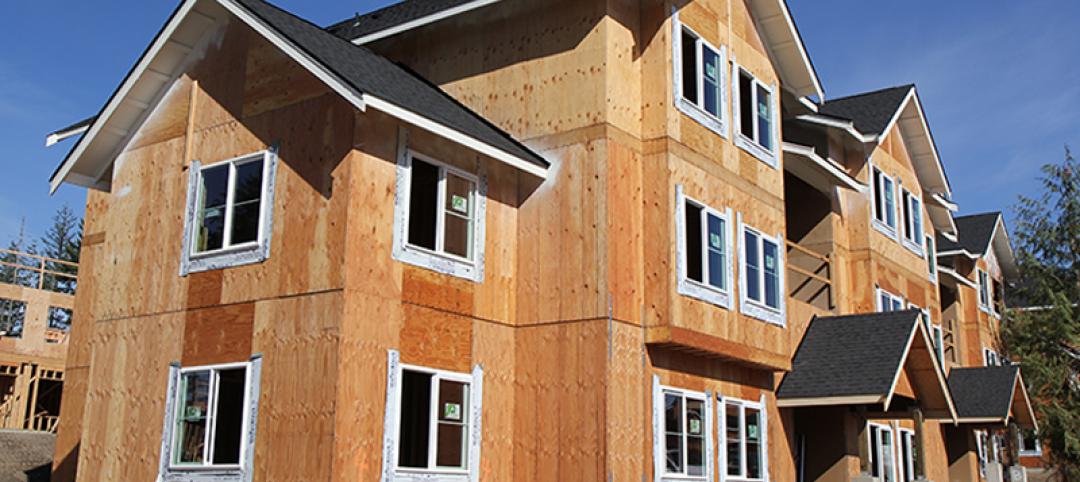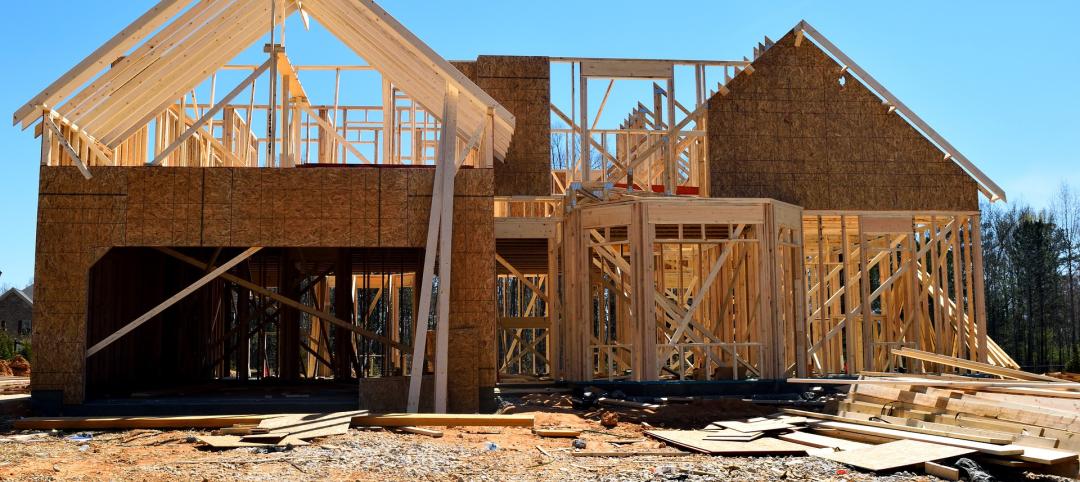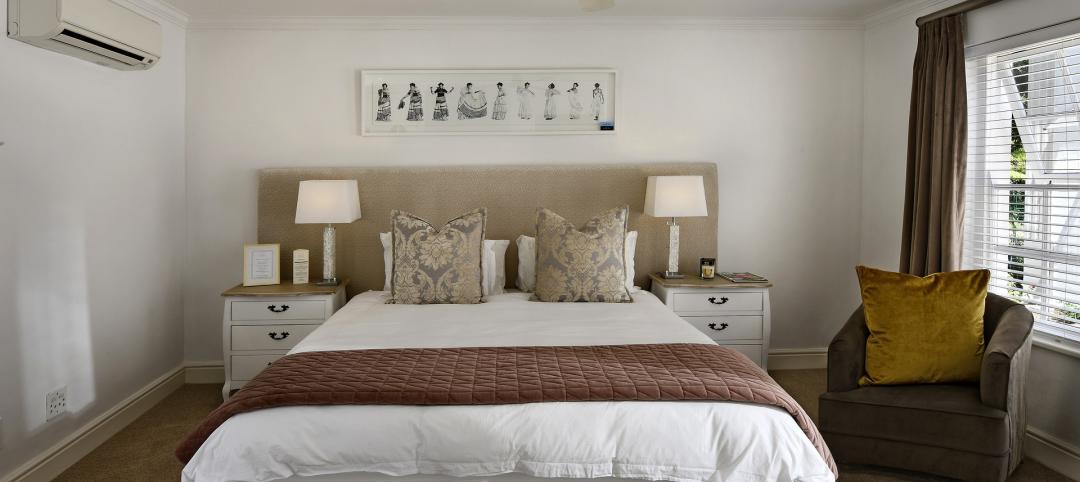Developers of multifamily apartment buildings remain mostly positive about their markets’ current conditions, according to the latest quarterly tracking data that the National Association of Home Builders released on February 26.
NAHB’s Multifamily Production Index (MPI), based on responses from 93 developers across the country, stood at 54, on a scale of 0 to 100, in the fourth quarter of 2014. The Index—a composite measure of developer sentiments about construction for low-rent units, market-rate rentals, and for-sale condos—registered above 50 for each quarter last year, and has been hovering at 50 or higher since the first quarter of 2013.
The latest reading “is in line with our view that the multifamily segment of the industry has largely recovered from the downturn,” said NAHB Chief Economist David Crowe. “After increasing steadily over the past several years, multifamily production has now reached a healthy, sustainable level.”
Developers’ attitudes are also reflected in their willingness to take on future projects. In January, permits issued for buildings with five or more units rose by 13.8% to an annualized rate of 372,000, according to the Census Bureau.
A closer look at the numbers finds that developers’ sentiments about current conditions for market-rate starts, at an index of 62, were more robust than their sentiments for either low-rent starts (52) or for-sale condo starts (50).
NAHB’s Vacancy Index, which measures the industry’s perception about apartment vacancies, stood at 39 in the fourth quarter of 2014, compared to 38 for the same quarter a year earlier. (The lower the index, the fewer the perceived vacancies.) Interestingly, developers perceived lower vacancies for Class B apartments compared to either Class A or C apartments.
Developers’ attitudes are also reflected in their willingness to take on future projects. In January, permits issued for buildings with five or more units rose by 13.8% to an annualized rate of 372,000, according to preliminary estimates released by the Census Bureau on February 18.
Multifamily starts in January were up 24.5% over the same month a year earlier to an annualized rate of 381,000 units. In 2015, NAHB expects multifamily starts ultimately to increase modestly to around 358,000. “Because of strong job growth, we expect to be able to keep building for the foreseeable future,” said W. Dean Henry, CEO of Legacy Partners Residential in Foster City, Calif., and chairman of NAHB’s Multifamily Leadership Board.
Financing projects should not be an issue, as more lenders are jumping into this sector. Banks and Commercial Mortgage-Backed Securities lenders increased their market share of lending for multifamily projects through 2014, and are expected to be even bigger players this year, as Fannie Mae and Freddie Mac pull back. “Capital is plentiful and many lenders are expanding their target markets for investments,” observed Faron Thompson, head of Jones Lang LaSalle’s multifamily debt finance team.
It’s worth noting, though, that Fannie and Freddie expect demand for multifamily housing to soften a bit over the next two years, and for most of the growth to occur in a limited number of metro markets.
Related Stories
Sponsored | Multifamily Housing | Dec 13, 2023
Mind the Gap
Incorporating temporary expansion joints on larger construction projects can help avoid serious consequences. Here's why and how.
Giants 400 | Dec 12, 2023
Top 35 Military Facility Construction Firms for 2023
Hensel Phelps, DPR Construction, Walsh Group, and Whiting-Turner top BD+C's ranking of the nation's largest military facility general contractors and construction management (CM) firms for 2023, as reported in Building Design+Construction's 2023 Giants 400 Report.
Giants 400 | Dec 12, 2023
Top 50 Military Facility Engineering Firms for 2023
Jacobs, Burns & McDonnell, WSP, and AECOM head BD+C's ranking of the nation's largest military facility engineering and engineering/architecture (EA) firms for 2023, as reported in Building Design+Construction's 2023 Giants 400 Report.
Giants 400 | Dec 12, 2023
Top 40 Military Facility Architecture Firms for 2023
Michael Baker International, HDR, Whitman, Requardt & Associates, and Stantec top BD+C's ranking of the nation's largest military facility architecture and architecture/engineering (AE) firms for 2023, as reported in Building Design+Construction's 2023 Giants 400 Report.
Codes and Standards | Dec 11, 2023
Washington state tries new approach to phase out fossil fuels in new construction
After pausing a heat pump mandate earlier this year after a federal court overturned Berkeley, Calif.’s ban on gas appliances in new buildings, Washington state enacted a new code provision that seems poised to achieve the same goal.
MFPRO+ News | Dec 11, 2023
U.S. poorly prepared to house growing number of older adults
The U.S. is ill-prepared to provide adequate housing for the growing ranks of older people, according to a report from Harvard University’s Joint Center for Housing Studies. Over the next decade, the U.S. population older than 75 will increase by 45%, growing from 17 million to nearly 25 million, with many expected to struggle financially.
MFPRO+ News | Dec 7, 2023
7 key predictions for the 2024 multifamily rental housing market
2024 will be the strongest year for new apartment construction in decades, says Apartment List's chief economist.
Codes and Standards | Dec 7, 2023
New York City aims to spur construction of more accessory dwelling units (ADUs)
To address a serious housing shortage, New York City is trying to get more homeowners to build accessory dwelling units (ADUs). The city recently unveiled a program that offers owners of single-family homes up to nearly $400,000 to construct an apartment on their property.
MFPRO+ News | Dec 5, 2023
DOE's Zero Energy Ready Home Multifamily Version 2 released
The U.S. Department of Energy has released Zero Energy Ready Home Multifamily Version 2. The latest version of the certification program increases energy efficiency and performance levels, adds electric readiness, and makes compliance pathways and the certification process more consistent with the ENERGY STAR Multifamily New Construction (ESMFNC) program.
Transit Facilities | Dec 4, 2023
6 guideposts for cities to create equitable transit-oriented developments
Austin, Texas, has developed an ETOD Policy Toolkit Study to make transit-oriented developments more equitable for current and future residents and businesses.

















